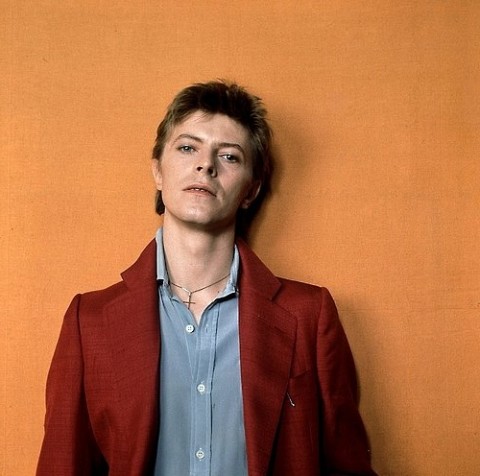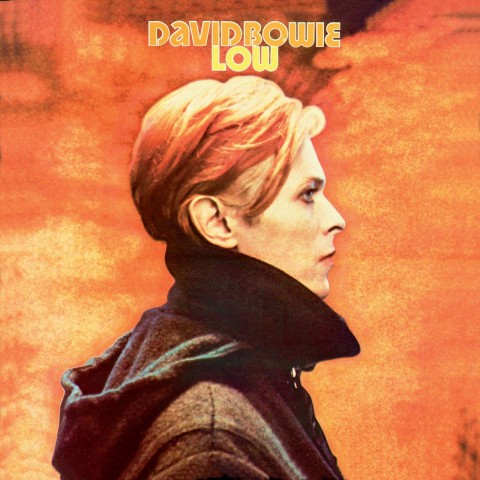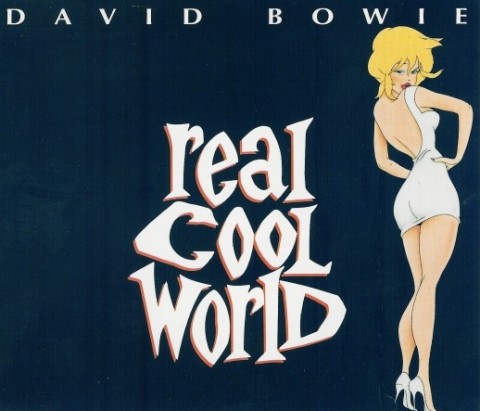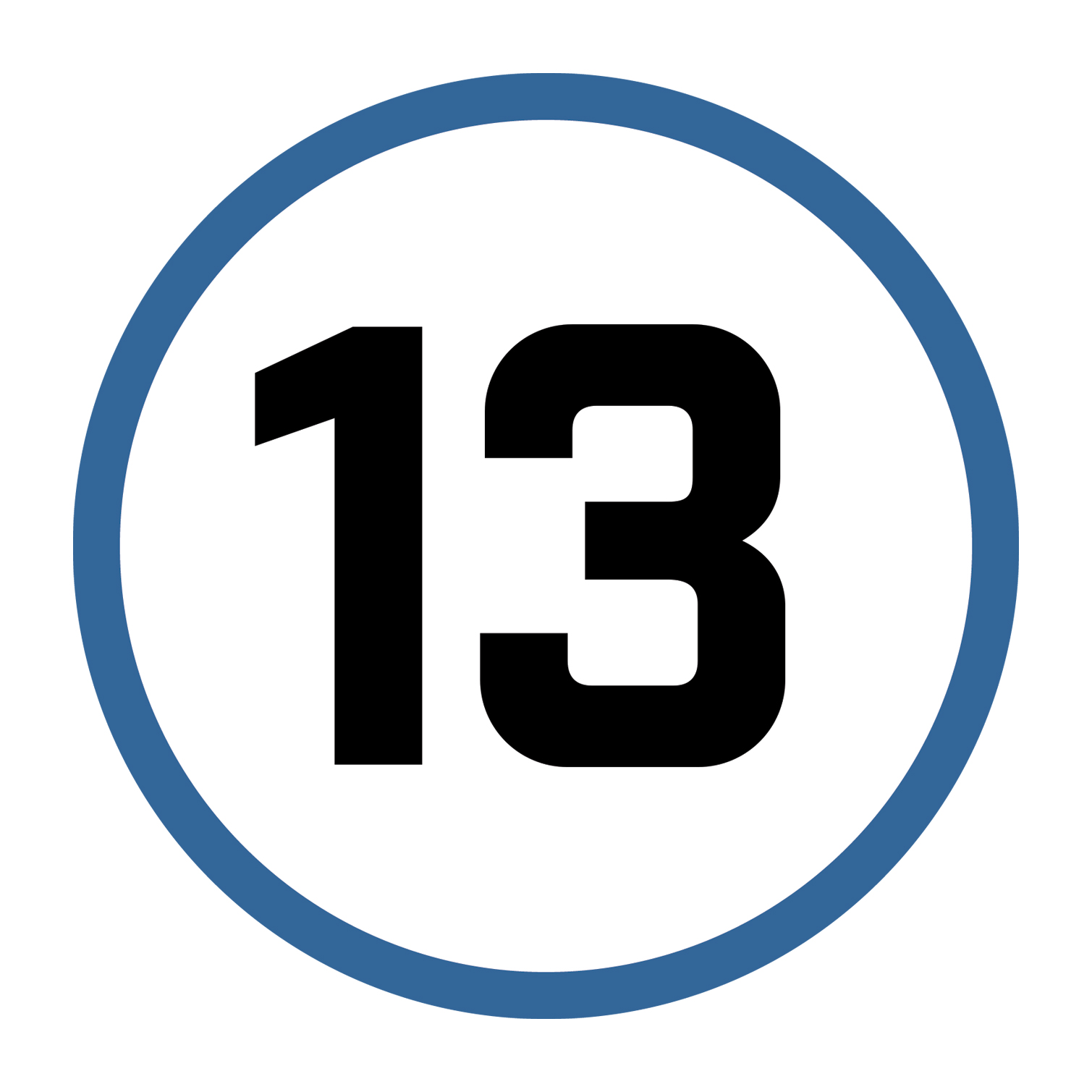Saturday Deluxe Special / A Life Listening to David Bowie: part 3

In the third part of a special feature, SDE Editor Paul Sinclair, reflects back to his earliest memories of hearing, buying and listening to the music of David Bowie. If you haven’t read part one (and two), we suggest you start here.
If you’re keeping up with the story… it’s the early nineties and I had just seen David Bowie play live for the first time, at the Milton Keynes Bowl on his Sound + Vision tour. That’s the one where he fibbed about playing his songs live ‘for the last time’ (Bowie loved a dramatic, but ultimately inaccurate grand statement).
Before we move forward to the next releases in his career, this is probably a good time to reflect back on my Bowie ‘education’. Remember, I’d taped his entire 1970s output on those TDK SA90s. It would be nearly 25 years before I became a music blogger, so at this point in time (I’m talking about the late 1980s) I was working as a trainee marine reinsurance claims broker, walking around Lloyds of London trying to look like I knew what I was doing (the ‘careers advisor’ at my school should have been sacked).
I didn’t live in London, but that was okay – l actually liked the commute, because I’d use the time to listen to whatever cassette tapes I’d put in my briefcase (yes, I had a briefcase) and I’d also smoke (don’t do it, kids), in what looking back on it, was a very grim concept – the ‘smokers’ carriage’ on the train (it was really disgusting). If you want to know how Bowie influenced I was, when I left home I even smoked French cigarettes Gitanes for a while, because that was the preferred brand of The Thin White Duke (in my defence I was 19). I did this until my housemates, who all smoked Silk Cut, B&H etc., complained about the smell (I kid you not).
ANYWAY… for a very intense period of time I was working through Bowie’s 1970’s albums and we’re up to the first of the so-called Berlin Trilogy, Low. I say ‘so-called’ because only Heroes was entirely recorded in Berlin.

There was nothing to not like about Low. It had another fantastic front cover with a certain Mr Thomas Jerome Newton esq. again featuring on the sleeve, in profile (low profile, geddit?). Side one features so many great songs. Of course, it starts with the instrumental Speed of Life but Breaking Glass is a brilliant fusion of angular music and superb lyrics. Come on, “don’t look at the carpet, I drew something awful on it” – who else is going to write that line? The whole thing is fantastically realised but annoyingly short.
Sound and Vision is arguably, like Ashes to Ashes, one of the very best songs David ever recorded. It’s perfect. That 90-second intro is exquisite, ending with the girls and their ‘do duh do da dos’ and some signature Bowie sax. This could easily have been a very successful instrumental, but with a few great lines David adds another dimension to it and connects the music to the Low‘s themes of isolation and alienation. Structurally, like much of the album there is no regard for convention. The song has no middle eight, just two two-line verses, it starts with what you might call ‘the chorus’ and the intro is the same length as the rest of the track. Apparently the BBC used the music for promoting its output at the time which no doubt contributed to the song becoming a number 3 hit in the UK (supposedly Bowie was irritated at this, literally wanting to keep a ‘low’ profile).
Side 2 of Low was all instrumentals which was quite a radical thing to do, although let’s not forget, there are still two instrumentals on side 1 (Speed of Life, New Career in a New Town) putting the vocal tracks on the album in the minority.
Bowie’s work rate in the entire 1970s was phenomenal, but let’s pause a second to think about 1977. Low‘s follow-up Heroes was also released in 1977 and so were the two Iggy Pop albums that David Bowie co-wrote/produced, The Idiot and Lust For Life. You read that right, David Bowie was the creative force behind FOUR classic albums issued in 1977. It’s no wonder that 1978 would be the only year in the 1970s that he didn’t issue a studio album.

On to Heroes. I know the title track is a ‘classic’ but it’s a little bit to ‘wave-your-hands-in-the-air’ for me. I just cannot connect to that song. Maybe it’s the talk of dolphins or just because like M People/Heather Small with their bloody ‘Search For The Hero/Proud’ nonsense, it gets tagged on to every worthy bit of news footage or cause. Too much feel-good factor. Gimme V-2 Scheider or the get-me-to-the-doctor’s stream of consciousness that is Blackout over Heroes any day. The instrumentals on side two of the album are an obvious link it to Low. Sense of Doubt is a highlight although I think I prefer the instrumentals on Low. Having said that Heroes has a ace hidden up its sleeve – The Secret Life of Arabia. It’s as bonkers as everything else on the album but the production sounds wonderful. It’s also a refreshing palette cleanser after all the moody instrumentals that precede it. If you want me to recommend a Bowie ‘deep cut’, this is it.
So, scores on the doors…. SA90 number six has Low on side one and Heroes on side two. They will both have their champions, but for me it’s a relatively easy points victory for Low. Heroes is brilliant but rather unpredictable. An exhilarating, but bumpy ride. The songs are arguably more developed than on Low, but I’m going to use that word ‘immersive’ again. Low is more immersive. You can connect to the album and themes more easily. We’ve all drawn something awful on the carpet at some point, right? No? Well we’ve probably all known someone, somewhere along the line whose carpet we want to deface, let’s put it that way. And with that lovely thought, time to move on…
In 1992, the news filtered through that David Bowie was working with Nile Rodgers again for the first time since Let’s Dance. This was indeed exciting news, although the first fruits of their labour – the Real Cool World single – was virtually ignored by media and public alike. It’s a forgotten song from a forgotten movie (all I need to say are the words “live-action/animated fantasy film” and you’ll know to avoid). Obviously, I bought the CD single which featured six remixes of that one song, but the release contained no other previews of tracks they might have been working on.
I have to admit I was a bit worried. This ‘comeback’ single (issued in August 1992) stalled at 53 in the UK charts and it was far from a classic. If this was the lead single from the new album, then ‘Houston’ we have a problem…

I reckon Bowie and Rodgers decided it was a bit shit, because it didn’t even end up on the album and just over six months later Jump They Say was the first single from Black Tie White Noise. It probably worked in David’s favour that most people were oblivious to the fact that he’d had a flop single out the year before!
Jump They Say got the full promotional push with two 12-inch singles, two CD singles, at least TEN remixes of the track and an expensive looking video. Bowie was also on the front cover of the single sleeve (not a cartoon lady), which helped. All this did the trick and Jump They Say was sprang into the charts, peaking at number nine in the UK, which was Bowie’s first top ten single success single Absolute Beginners in 1986. That seemed like a lifetime at the time, although it was only seven years! The next foray into the UK top ten singles chart would be 27 years later (Where Are They Now).
https://www.youtube.com/watch?v=avJt0SQec0I
A favourite artist having a hit is a great feeling. You’re both proud of them for being clever enough to create a hit record and you enjoy basking in the I-told-you-he-was-good glory when everyone else starts buying it or listening to it. The album reached number one in the UK charts, something that wouldn’t happen again until 20 years later, when 2013’s The Next Day was issued.
I do like Black Tie White Noise, but it’s a little bit of a mish-mash if we’re honest. There were a couple more singles from it that did okay, but what was really exciting back in 1993 was that Bowie would release a second album that year, The Buddha of Suburbia.
Buddha was technically a soundtrack album, although only the title track appeared in the BBC TV series based on Hanif Kureishi’s book. This was a collaboration with the multi-instrumentalist Erdal Kızılçay (although all the songs were credited to Bowie alone). David had worked with Erdal on Never Let Me Down and Iggy Pop’s Blah Blah Blah and Nile Rodgers had used him for some demos when prepping for Let’s Dance, ten years earlier in 1983. He lived close to David in Switzerland at the time, so a multi-instrumentalist and local! (read this interesting SDE interview with Erdal)
https://www.youtube.com/watch?v=48d4irOHhLY
The title track was beautifully evocative of Bowie’s past and indeed was self-referential with its “Zane, Zane, Zane, Ouvre le chien” outro taken from The Man Who Sold The World’s All The Madmen and *that* chord progression at 3.25. This song had a effective video too, with David walking around the streets of “south London” although anyone looking for high-budget production values would have been disappointed.
The album itself was pretty experimental in places but punctuated with some great songs such as Strangers When We Meet, which Bowie obviously held in high regard since he put a re-recording on his next album (Outside). Fans in America would have had to buy UK imports of the record, since it wasn’t issued in the US originally, adding to the feeling that it was all a bit ‘under the radar’.
Despite the quality and an embracing of what you might call his 1970s ‘values’, the album didn’t even make it into the top 75 and the single poked its head around the corner of the Top 40 before scuttling off into oblivion. Bowie was beginning a mid-nineties creative renaissance that would not be rewarded by big sales and high chart positions.
This was going to be a three-part piece of Bowie, but I’ve made some C-C-C-C-Changes to that plan and the final part, covering Lodger, Scary Monsters and Outside to Reality will be posted soon.
27 Comments
27 thoughts on “Saturday Deluxe Special / A Life Listening to David Bowie: part 3”
Leave a Reply
You must be logged in to post a comment.





this is very sad news re Bowie http://www.udiscovermusic.com/magic-shop-where-bowie-secretly-recorded-blackstar-to-close
Cassette tapes and briefcases, French cigarettes and British Rail… lovely details.
Low beats Heroes? Agreed!
On the ’93 releases, I think Black Tie and Buddha both have their moments (and probably – along with Tin Machine! – signify Bowie starting to find his way again…) but even the good songs still struggle to overcome 90s production values. Except maybe Jump They Say, where the sadness creeps through the sheen.
Look forward to the final installment (whenever that may be…)
Another great read Paul. Thank you. I am in complete agreement about Low. My all-time favourite Bowie album. Truly fantastic. And while I frequently get admonished by my fellow Bowie fans, I also have never been a big fan of the song Heroes. I know it is a classic and people hold it with high regard, but to me, it just does not do it. The album is great but not as great as Low or Lodger. Suburbia is also one of my favourite Bowie albums. Truly under-appreciated and highly recommended to all who like Bowie but missed it.
I always thought the BoS album was pretty under rated. I also think that the instrumental ‘the mysteries’ is one of the most sublime and beautiful pieces ever recorded
Hey, I liked “Real Cool World” when it came out. And it held its own very nicely as the lead-off track against the other tracks comprising the OST.
I remember the American press absolutely butchered BTWN when it was released. They came to their senses years later when the deluxe edition hit shelves.
Part 3 at last!! And an excellent read it is too! I also bought the 6 track RCW cd single and loved the actual song but hated the remixes!!! BUDDHA was also a favourite album and I’m glad that it’s getting the recognition it deserves these days. There is not a day gone by since January 10th that I haven’t listened to at least on Bowie album…luckily I have a very understanding wife!
This series of articles could – and should! – run forever. Keep up the good work mate!
How many artists had their postal fandom gathered and organised in a place near Cov?
Another great article, Paul. It’s amazing how closely your Bowie listening experience (I think we’re the same age) ties in with mine.
The astonishing thing here is that the Real Cool World single slipped under the radar as it did. It’s hard to imagine this happening in this era of information overload, where the single would have been all over the Internet. Twenty-five years ago, if you didn’t read about a release in one of a few music magazines such as NME, or subscribe to an artist’s postal updates (normally by means of filling in a postcard found in a CD you’d bought, and returning it to an address in Leamington Spa – remember that?) then if something didn’t get radio airplay, it was possible to be in complete ignorance of a release.
The Buddha of Suburbia album was also criminally underrated/ignored. As well as the early-70s sounding title track, there was a lot of other good stuff on there. I can’t remember why, but I sold my original pressing of the album on eBay many years ago at a point before the freely-available reissue when you could get stupid money for it. I wish I hadn’t.
3 Alveston Place, Leamington Spa. My brother used to know somebody who worked there.
Yes, remember those cards well. Good old pre-internet marketing.
Thanks for sharing these recollections. Been enjoying them so far and looking forward to part 4!
Hi Paul, have just come across your Bowie tributes, fascinating reading. Looking forward to part 4!
As for my introduction to Bowie, it was in 1975 with the reissue of Space Oddity. While the A side was unforgettable, it was actually the B side, Velvet Goldmine, which I really loved and is probably one of my favourite Bowie tracks of all time.
Being a few years older than you, as a child I grew up in the glam rock era and just loved it (T-Rex being another great favourite) so my favourite Bowie songs were the ones you could really rock to in the school disco – Jean Genie and Rebel Rebel.
Also you have overlooked another musical collaboration of Bowie’s in the mid 70s – the wonderful Transformer by Lou Reed, the soundtrack to my early teens. The Bowie influence is really tangible on Satellite of Love – he even does backing vocals on this track.
Basically during my teens Bowie was god-like, culminating in Ashes to Ashes, to me his last great classic. Although Let’s Dance was great, I felt it lacked the mystery and inventiveness that his earlier output had. Then Absolute Beginners came out and I thought it was Absolute Tosh, I’m afraid… well, I was into Siousxie and the Banshees by then, but that’s another story….
Hi Sarah. Nice of you to drop by! Check out this post which includes Velvet Goldmine amongst its top 10 lost Bowie tracks
http://www.superdeluxeedition.com/feature/david-bowie-top-10-lost-tracks-2/
Thanks Paul – it was great to hear it again. I’m sure I have it somewhere on one of my many compilation tapes from decades ago. Wish I had the single but it was a bit before my record-buying time.
I love DBs 90’s videos, where he might as well be saying “Look at my new expensive teeeeth!” :-)
Love these Bowie posts Paul. I have been well aware of his titanic creative output in ’77 and glad you mentioned it. Few realize his contributions to Iggy’s initial releases. And for my money Low is his greatest album cover, don’t know why but it has always been very striking to me.
Good piece. Thanks for the link to the Erdal interview, it was really fascinating, giving a great insight into Bowie’s writing process.
And nice piece, by the way. Look forward to part 4.
Anyone else agree with me that The Buddha of Surburbia is THE great Bowie album of the 1990s? No idea why this isn’t celebrated more.
I agree, Stephen! It barely nudges out 1. Outside in my mind.
Love this series, Paul!!
Glad to see this feature return! ’90s Bowie was probably my favourite, it’s when I was most connected to the kind of music he was making. The run of singles from 1991 to 1994 that took in You Belong In Rock N Roll, Jump They Say, Miracle Goodnight and Buddha Of Suburbia was fantastic, and Black Tie White Noise remains my most-loved Bowie album. The production is pristine.
Apologies, I am of course taking about the Buddha Of Suburbia single?
Yeah the “Buddha Of Suburbia” single is fantastic. Such great chord changes and lyrics and David walking around the same neighborhood as the TV series was shot in. The TV series is pretty good also if you can find it reasonably priced on DVD nowadays.
http://www.amazon.co.uk/Buddha-Suburbia-DVD-Naveen-Andrews/dp/B000R21384/ref=sr_1_3?ie=UTF8&qid=1456055214&sr=8-3&keywords=Buddha+Of+Suburbia
The video for Jump They Say is as iconic as the films for Life On Mars and Ashes to Ashes, but hardly anyone has seen it.
that should go on “…from me about extending to four parts”. I’m enjoying the nostalgia.
Also, I have only just noticed the David Bowie tab at the top of the page. How long has that been there?
No complaints from me
Great read Paul.
I had forgotten just what a fantastic single that was until I just played that clip.